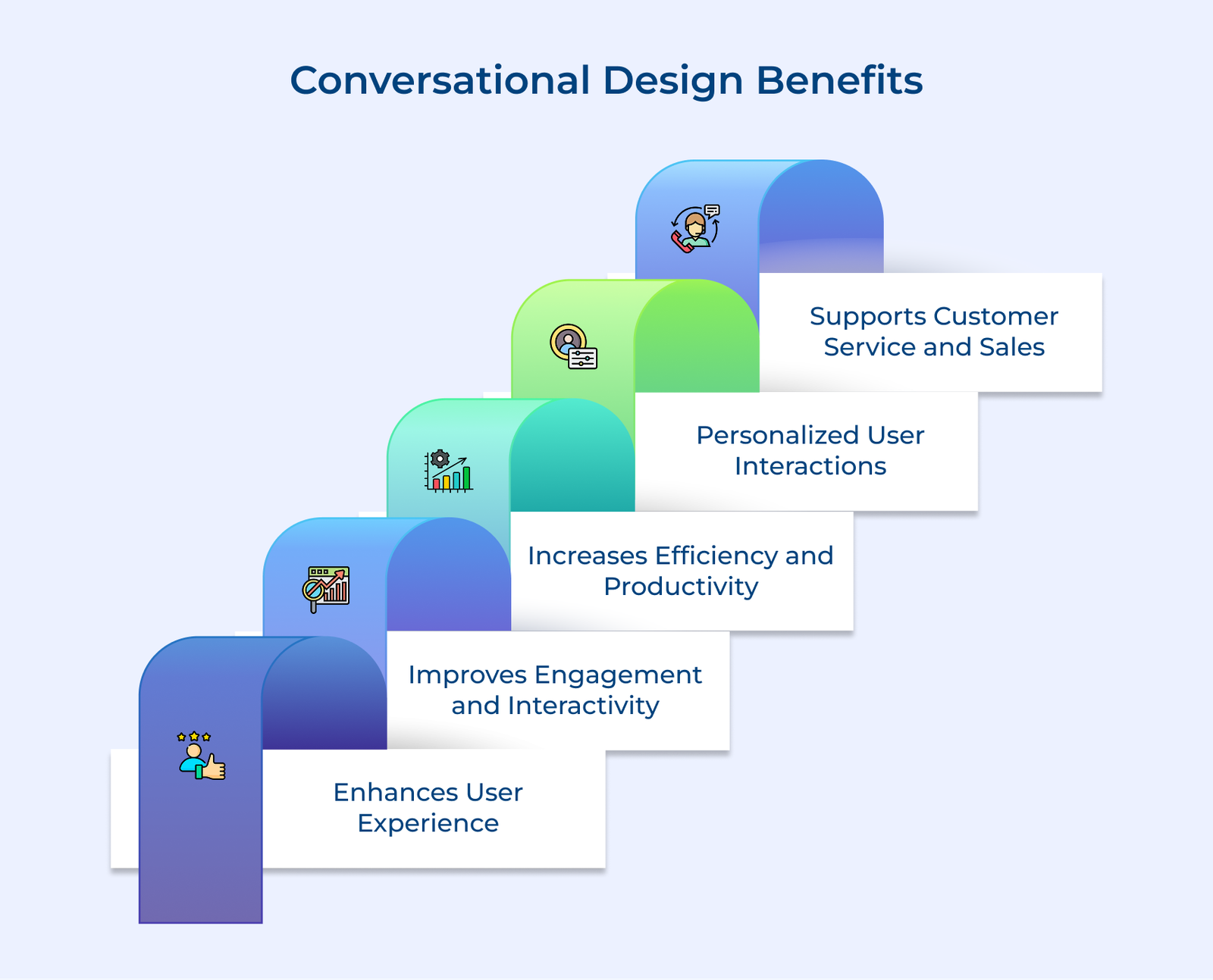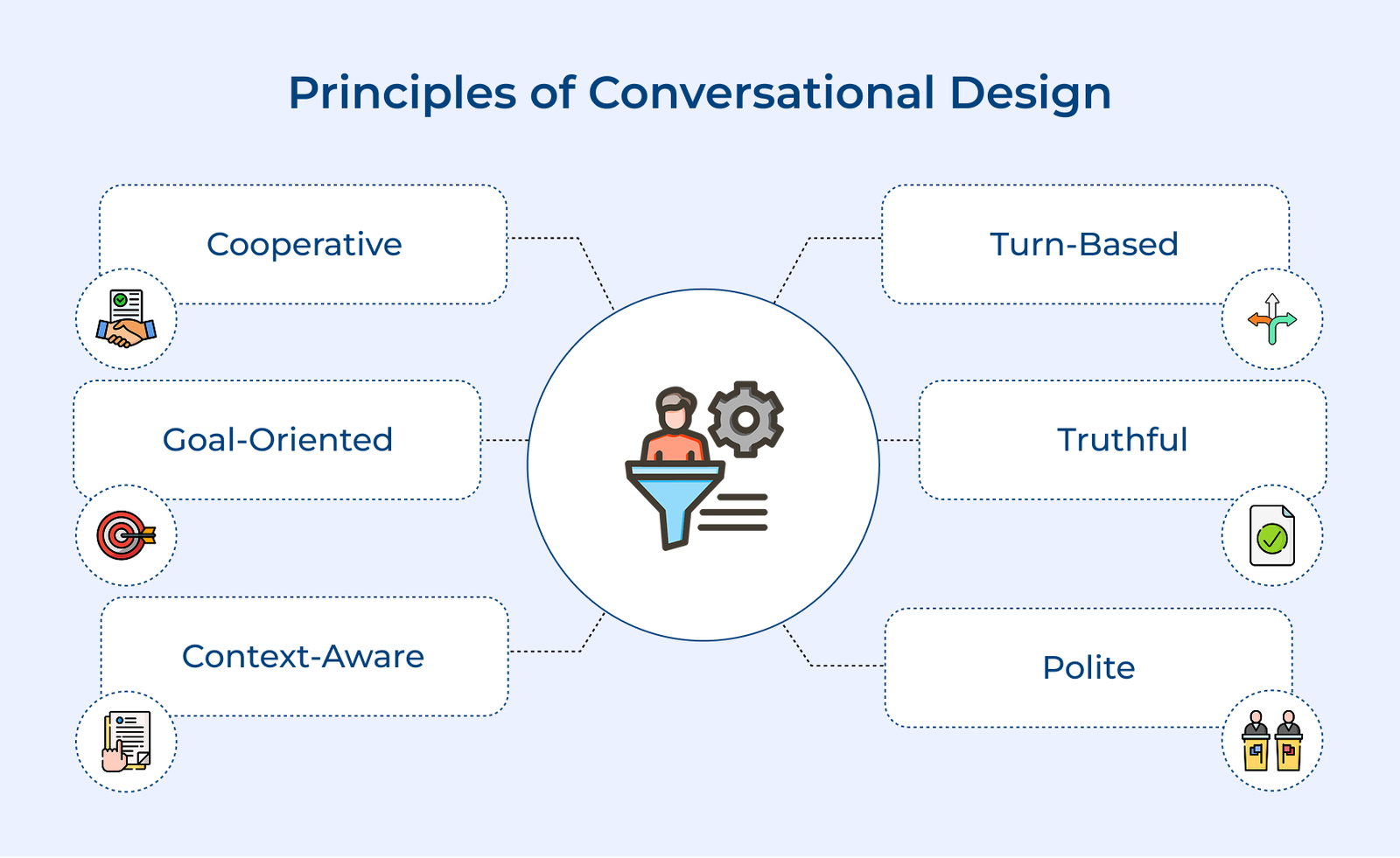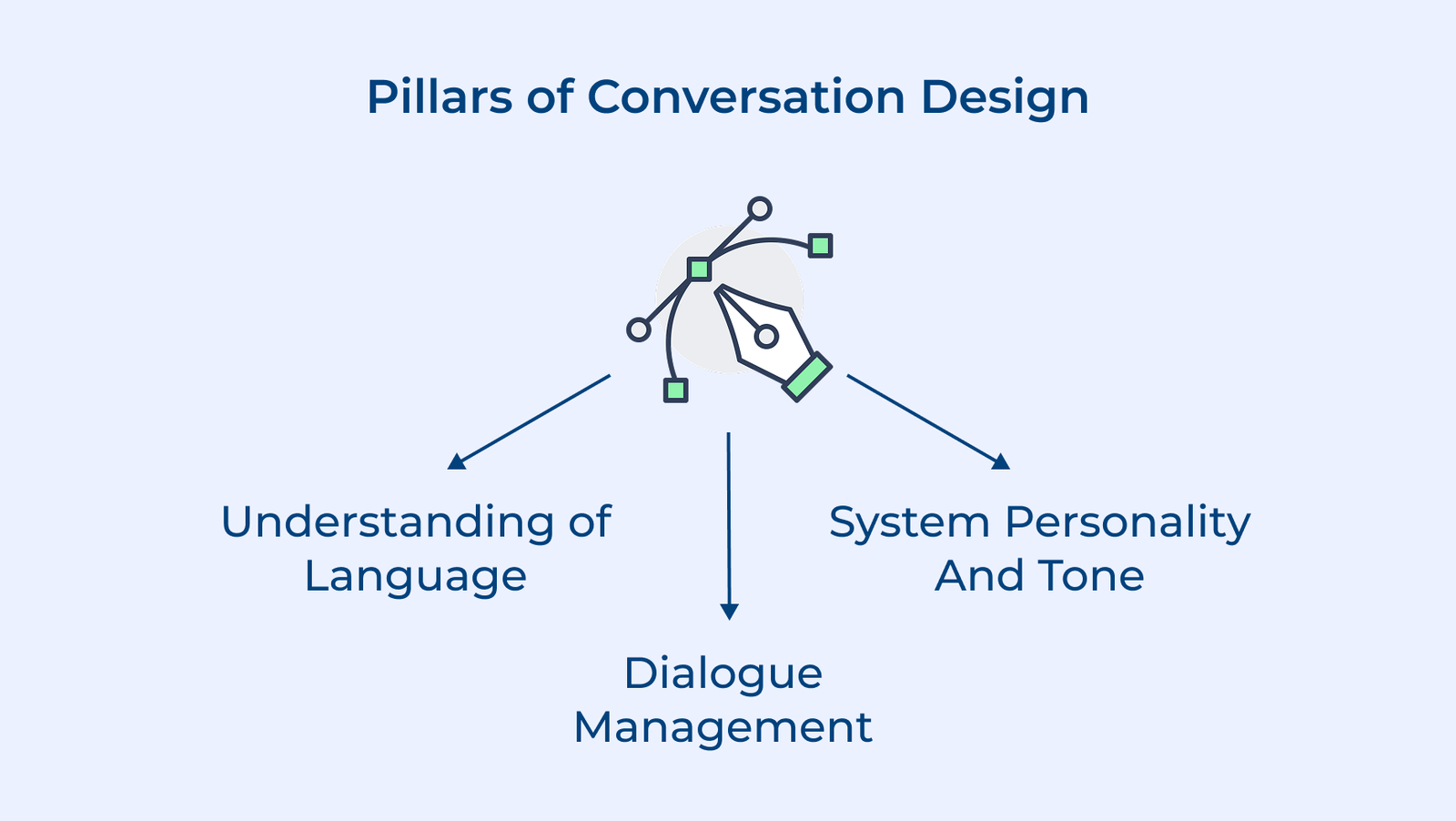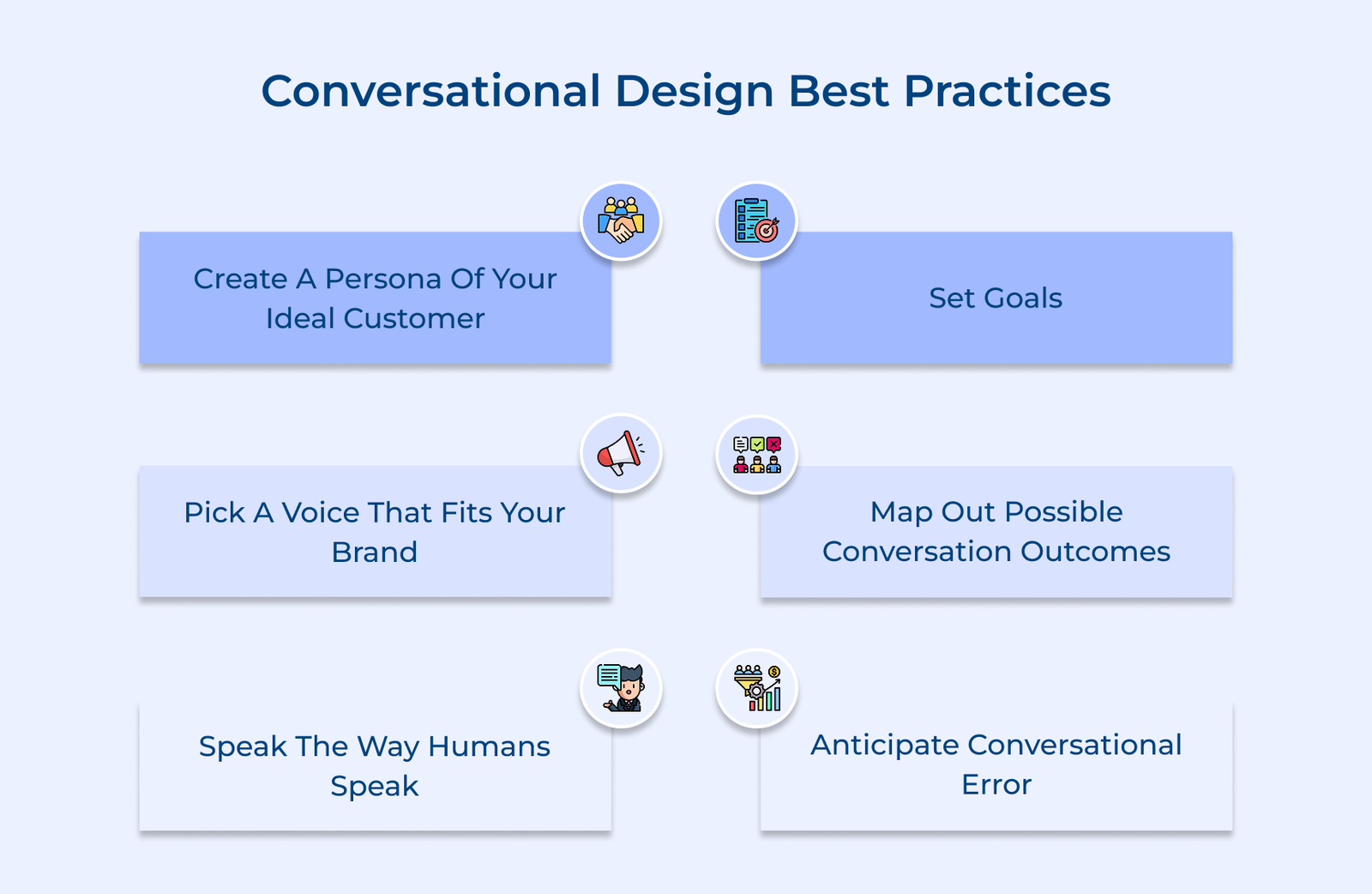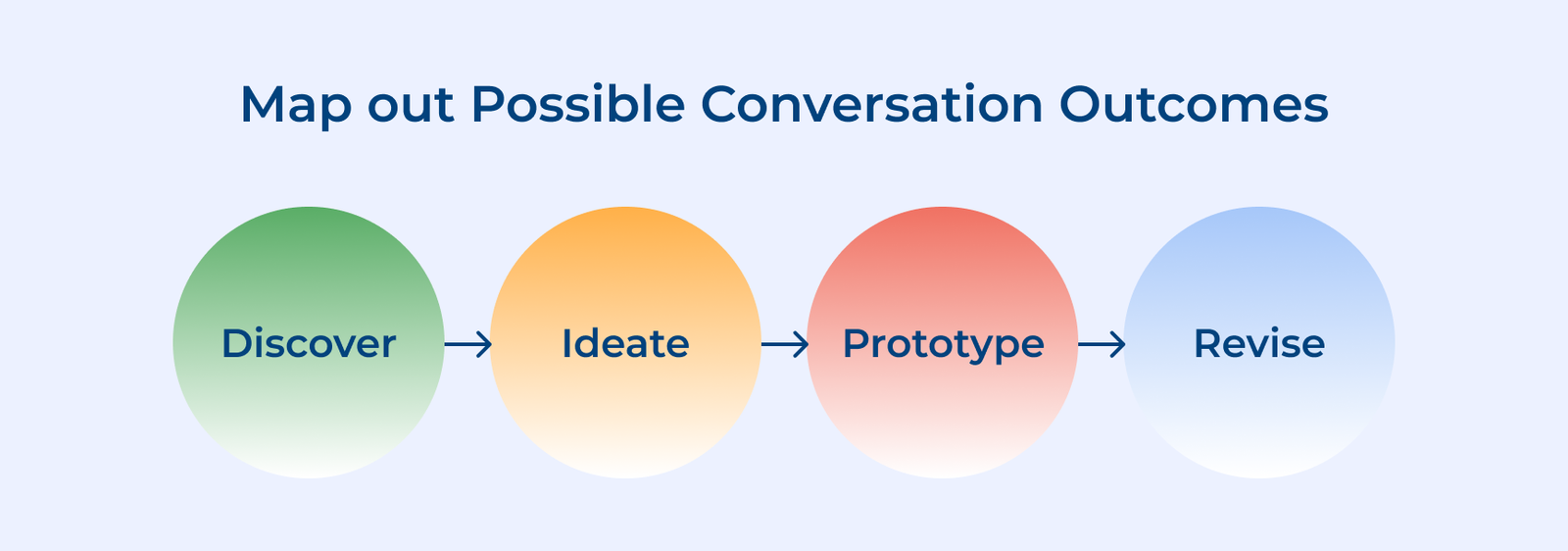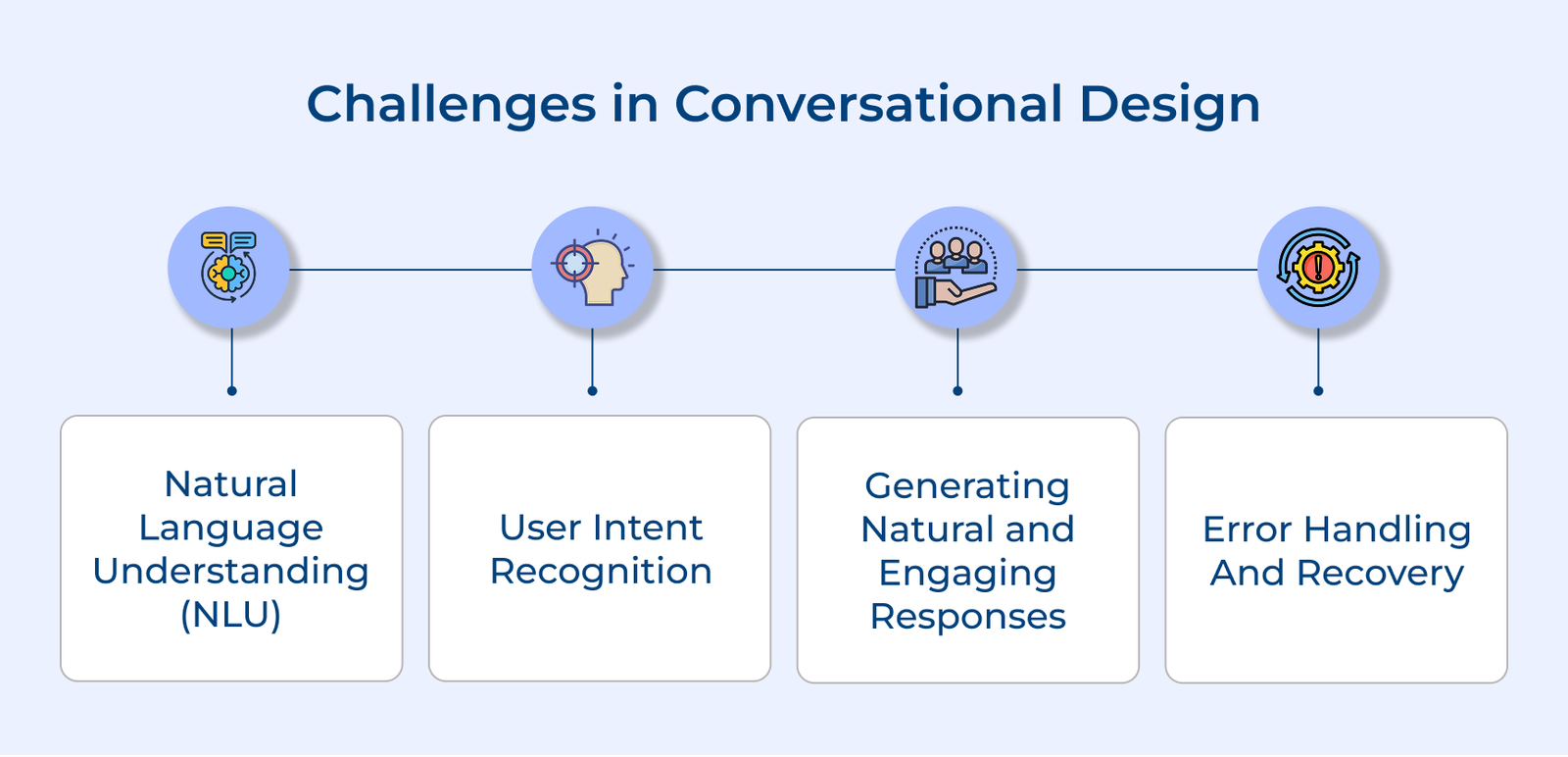1. Cooperative
Cooperation is crucial in the conversation design process because it enhances user experience by creating a sense of empathy and understanding. When a system is cooperative, it actively listens and responds to the user’s needs, making the conversation feel more natural. The principle ensures that the system doesn’t leave the user feeling frustrated or misunderstood.
An example of the cooperative principle is a virtual assistant that assists users in finding a restaurant. The system would ask the user for their dietary restrictions and then cooperate by providing a list of suitable restaurant options. The system would further cooperate by offering additional information about each option to help the user make a decision.
2. Goal-Oriented
Being goal-oriented in the conversational design principle means designing conversations that guide users toward achieving their intended objectives. It involves structuring the conversation flow, using suggestions and providing relevant information or actions to assist users in reaching their desired outcomes.
An example of the principle in action is a chatbot designed for customer support. When a user interacts with the chatbot seeking assistance, the conversation should be structured around resolving their specific issue efficiently. Understanding the user’s problem and offering relevant solutions enables the chatbot to help the user achieve their goal of getting support quickly.
3. Context-Aware
Context-awareness refers to the ability of a conversational interface to adapt to the user’s current situation, preferences and surroundings. Leveraging user data and personal preferences enables the conversational system to provide relevant information or assistance to the user. Users feel understood when they receive personalized and timely responses, leading to a positive user experience.
Consider a virtual assistant integrated into a messaging app. When a user asks, “What’s the weather like today?”, the virtual assistant can leverage the user’s location data to provide an accurate and real-time weather update. Conversational interfaces that lack context-awareness may provide generic or irrelevant information, frustrating users and potentially causing them to abandon the interaction.
4. Turn-Based
Turn-based interactions prioritize the balance of speaking and listening. It ensures that the conversational interface doesn’t dominate the conversation or interrupt the user, but rather takes turns in an orderly and human-like manner. The principle mimics real-life conversations, where participants take turns to express themselves and actively respectfully listen to each other.
An example of the principle in action can be seen in voice assistants like Amazon’s Alexa or Google Assistant. The assistants wait for the user to finish speaking before responding, ensuring a natural conversational flow. The turn-based approach creates user-friendly experiences, improving customer satisfaction and making the technology feel more human-like.
5. Truthful
One of the fundamental principles of conversational design is “Truthful”, ensuring that the system provides accurate and honest information to the user. When users engage with a conversational interface, they expect factual and dependable responses. Adhering to the principle of “Truthful”, designers prevent confusion, misinformation and false expectations.
An excellent example of the principle in action is a virtual assistant providing weather updates. When a user asks about the current weather, the virtual assistant must provide accurate and up-to-date information. If the assistant constantly provides incorrect information or contradicts previous statements, users will quickly lose trust and abandon the system.
6. Polite
Politeness focuses on creating a friendly and respectful interaction with users, simulating natural human conversation. It goes beyond just providing information and involves building rapport. It sets the tone for the conversation and enhances the overall user experience. Politeness ensures that users feel respected, thus improving engagement and encouraging them to continue the conversation.
Consider a chatbot designed to assist customers in an online store. When a user requests information or asks for help, a polite response might be: “Certainly, I’d be happy to help you with that.” The simple phrase communicates willingness, empathy and a desire to assist, creating a positive impression.
3 Pillars of Conversation Design
Let’s dive deeper into each pillar and understand how they contribute to the success of conversational experiences.






